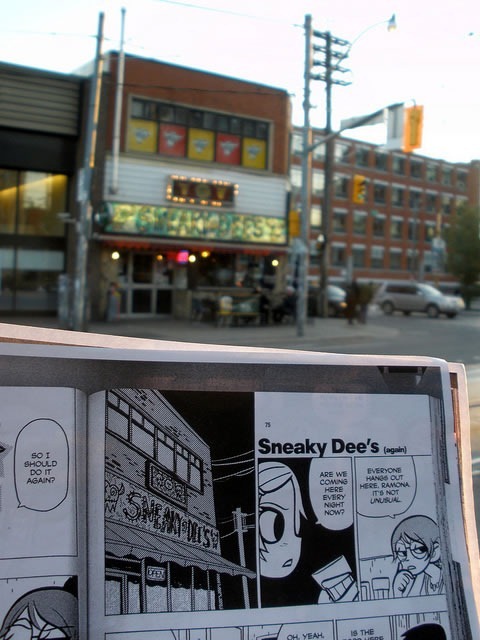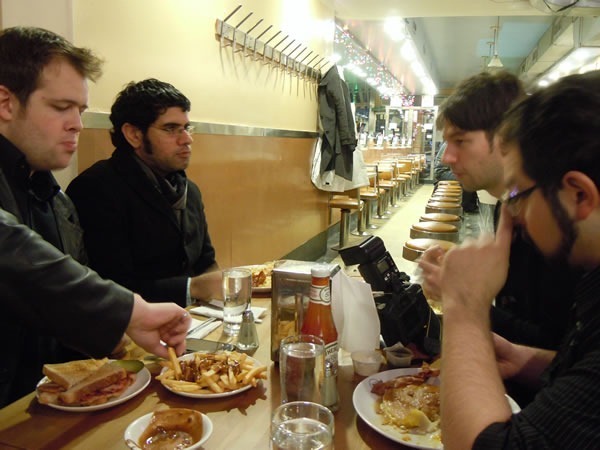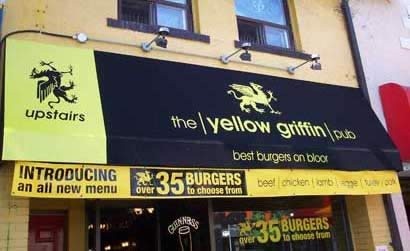The Weekend Before
Be warned: this is a long article. Go get yourself a drink first.
Maybe I caught “The Mother of All Flus” here:

This was the scene two Saturdays ago at Magpie. It’s yet another one of those tiny little bars on Dundas West, the kind that are almost too small and nondescript to notice and appear and disappear like mayflies in the spring. I was there for a farewell party for Wesley Hodgson and his girlfriend Kim; Wesley’s moving to Seattle to join Microsoft’s Access team.
In addition to Wesley’s well-wishers, who numbered near two dozen, there were another couple of parties packing the joint, including a Gillian Anderson-ish woman celebrating her 40th. It turns out that I knew one of her friends from Tucows, and when they saw that I had an accordion, they invited me to help them serenade her with Journey’s Don’t Stop Believing. These guys were prepared; they’d even printed out lyric sheets so that they could perform the song in its entirety and not bail out after only one chorus.
“Hey, birthday girl,” I asked once the mass singing had ended and everyone had returned to their smaller conversational orbits, “buy you a drink?”
“Thanks,” she replied, “but I’ve already got six coming my way.” She pointed to the bar, where two pints of beer, two different cocktails and a light- and dark-coloured shot were lined up for her.
“Looks like you’re set up, then,” I said.
“Hey, thanks for the song,” she said, and gave me a hug.
That’s about as touchy-feely as things got that weekend. I suppose I could’ve wandered straight into the path of someone’s sneeze.
The Day Before
The day before I got ill was a Monday, and I spent most of the day working at my home office, which still needs some rearranging before it can be considered fully set up (you can see a very, very early shot of it here). I took a break in the middle of the day to get in some laps at the pool at the gym, then returned home to work some more.

Later that afternoon, I tuned into YTV’s The Zone to catch the “Music Monday” segments that I’d recorded with their host, Carlos, the week before. I haven’t got a PVR at the moment and they’re sending me a DVD of my segments later, so I simply snapped some photos from the show with my phone:
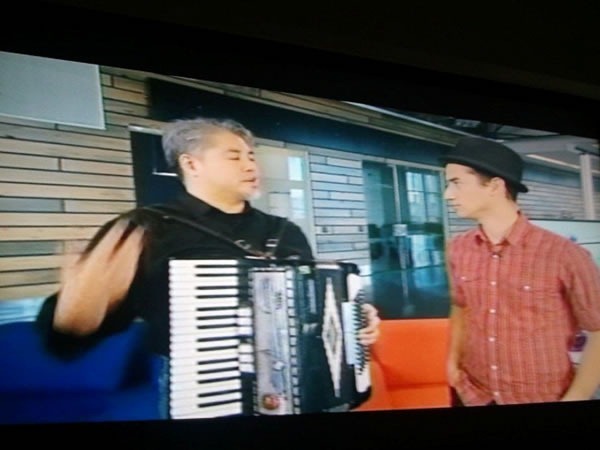
They aired four segments in total, each one airing at the end of a half-hour cartoon show, with the introductory segment airing right after Spongebob Squarepants.

A little later that evening, I bundled up, hopped on my bike and made my way down to The Wilson 96, a bar in Little Italy where I’d arranged to catch up with Andrew Burke, who was visiting from Halifax. We drank hot buttered rum and chatted a while; we also took snapshots of the stairwell leading down to the pub’s washrooms:
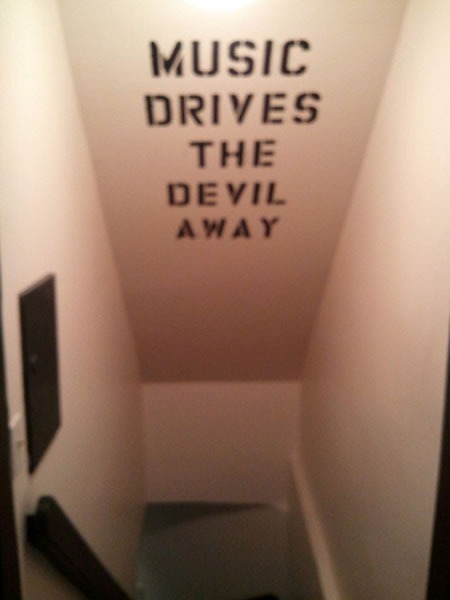
Afterwards, Andrew left to join someone for dinner and I headed home. Dinner for me was a very large bowl of chicken and barley soup, followed by more home office straightening-out and getting ready to come into the Microsoft office for a couple of meetings the next day.
The Night Before
I started feeling run-down around the time of the Colbert Report and decided to call it a night. TV and lights went off.

I woke up a half-hour later, shivering. I checked to see if the heat had gone out or if somehow a window was open, but neither was the case. I cranked up the heat, threw on an extra blanket and went back to bed.
A couple of times during the night, I found myself gasping for air and blowing my nose. It’s just a very bad cold, I thought, if I can sleep it off, I’ll be good in the morning.
Day 1: Tuesday

I still wasn’t feeling better in the morning. In fact, I was feeling the opposite.
I went to the kitchen to get a glass of water. I could barely get a couple of gulps down; it hurt to swallow and it seemed as if there were a big lump positioned right in front of my throat.
No problem, I thought. One really hot shower and a half dozen righteous loogie-hocks should clear that up. They didn’t.
I fired off some messages to my coworkers telling them that I’d be taking the day off. I had to travel to Montreal to attend the CUSEC conference the next day and had to make sure I was well for that. “A day’s rest should fix me up,” I told them.

I spent the morning lying in bed, feeling alternately hot, chilly and restless. In the afternoon, I decided to move a blanket out to the living room and watch a Venture Bros. DVD that I hadn’t yet popped out of the shrink-wrap. I watched a couple on the first disk, slept through a few others, and by the end of the second disk – around 3:30 in the afternoon – I didn’t feel as if I were improving. In fact, it was getting hard to breathe.
That’s when I realized that perhaps I was in more trouble than I’d realized. Lots of people show up at emergency rooms with chest pains that turn out to be relatively benign, but shortness of breath (or “SOB”, as it’s often referred to in medical shorthand) is often a great big warning light.
Time to call for help.
I’m the only one in my family who isn’t a doctor, so calling for help was relatively easy. Physically making the call, however, was a bit of a problem: as I cleared my throat to call my sister Eileen, I discovered to my surprise that I’d lost my voice. In it place was a raspy whisper that I wasn’t sure could be heard over the phone.
Luckily, we live in the 21st century. I simply sent her a text message.
Minutes afterwards, she texted a reply saying she’d head over after work and perhaps bring some “abx”, which I took meant to mean “antibiotics”. I told her I’d sit tight while waiting for her to arrive.

In the meantime, I stumbled about the house looking for anything to bring the fever down – aspirin, Tylenol, ibuprofen – but there was nothing but Cold-FX. Wendy had probably taken than stuff when she moved out.
I knew it, I joked to myself, the ex-wife is trying to kill me.

Although I wasn’t hungry, I hadn’t eaten a thing all day. Thinking that that might be part of the problem, I reached into the fridge and poured myself a glass of ginger ale, the only sugary drink I had handy. It was empty calories, but maybe a little energy might help. It didn’t do any good: the lump in my throat, which seemed bigger, just got in the way, and the carbonation only made it worse. It hurt to take one swallow, and I left the glass nearly full on the counter.
Eileen called me as she was leaving her office. I answered the phone and as soon as she heard my rasping voice, she suggested that perhaps she should take me to the emergency room.
“Good idea,” I croaked. I didn’t know what “emergency room ill” was supposed to feel like, but whatever I was feeling was close enough.

A couple of things were going for me that night. For starters, my mom is the Chief of Cardiology at St. Joe’s, and as such, everybody in the ER knows her. I owe a good chunk of my career to getting inside connections in certain places, and this certainly was a time and place to make use of one. It was also a quiet night in the ER – only a couple of other people were in the waiting area – which was another lucky break.
Eileen dropped me off at the ER doors and parked the car; I shambled straight for the chair in front of the triage nurse’s desk, took a seat and did my level best to stay upright. I’d had the presence of mind to pull out my health card and my phone to type out messages to the nurse should my voice get even worse. I even fired up OneNote and typed in the following items, the “suggested words” list helping correct my butterfingered typing:
- Chills
- Fever
- Sore throat
- Hard to breathe
- No drug allergies
The nurse stuck a thermometer under my tongue and a heart rate meter on my index finger.
“Temperature 39.8 [that’s 103.6 in degrees Fahrenheit], heart rate 110.”
“Not…good…” I managed to say. How could my heart rate be 110? I was sitting, almost slumped over, in a chair!
“We’ll have to isolate him,” the nurse said, “there’s a room in the back for that.”
“Can you walk?” asked the nurse, and I stood up. I followed her to a room very much like the one in the photo below:

They asked me to take off my shirt, and immediately after I did, they started jamming stuff on me: a blood pressure cuff on my left arm, a half-dozen or so probes across my chest, a heart rate/O2 meter on my left index finger and an IV line full of saline and antibiotics into my right arm. Then, two more needles in my left arm to draw some blood samples. I don’t remember who was doing all this; I just remember Mom and Eileen standing in the background, reassuring me, while it all happened.
Mom and Eileen stayed around for a while, but eventually it was time for them to go. In fact, there really wasn’t anything for the ER staff to do but wait for the test results and my condition to change. Everyone left the room and turned out the lights. Since it was so quiet in that section of the ER, they even turned out the lights at the desk area facing my isolated room. I dozed off for about an hour.

I woke up in a panic, unable to breathe. No matter how hard I tried, I couldn’t take in any air. It felt like drowning, and all the while, I was thinking about the article Drowning Doesn’t Look Like Drowning. I pulled myself partly upright, and felt something break away from my right arm. I clicked the call button that they’d attached to the railing of the bed and started looking around.
The room was mostly dark, lit only by some diffuse ambulance lights flashing through the room’s small translucent window and the monitors displaying my blood pressure, oxygen saturation and heart rate. Curiosity got the better of me for a moment and I stole a glance at my heart rate: 150.
No shit, I thought.
Although they’d transferred me into a hospital gown, I was still wearing my jeans. My phone was still in my pocket and still had plenty of charge. I hadn’t installed a flashlight app, but I fired up OneNote (which always runs with a light background). At least I had a light source now.
Why wasn’t anyone answering my call? I clicked the call button again.
I sat upright. I immediately felt a sensation of downward movement in my upper chest, as if a masseuse were working downward on me with a giant rolling pin. Was this what it felt like to check out? I wondered. I hoped not.
After the sensation passed, it felt a little easier to breathe. Maybe sitting up did it.
Still no answer from the call button. I clicked it again. What was wrong with these people?
Casting the light from my phone about, I got my answer. I’d managed to not only disconnect my IV line with my thrashing about (leaving a small pool of blood on the right side of the bed), I’d also managed to yank the call button’s cord out of its socket on the wall.
Nice going, deVilla, I thought, you just killed yourself.
Now that I knew what was going on, I came up with this plan:
- Reconnect the call button, then call for help
- Keep trying to breathe until help arrived
In my semi-coherent, possibly oxygen-deprived state, it seemed like a good plan. It might have even met the SMART criteria for project management.
I hopped off the bed, grabbed the dangling end of the call button cord and started looking for its jack on the wall behind the bed, sweeping the phone’s light from left to right. As I worked my way past various outlets and controls, I noticed this:
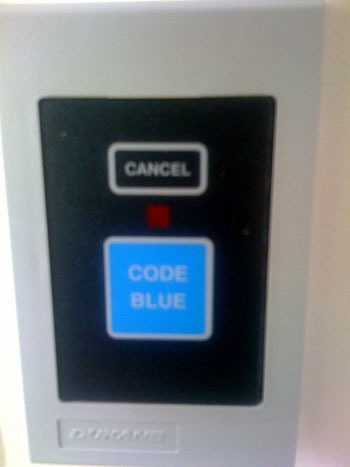 Creative Commons photo by Matt Kowalczyk. Click to see the original.
Creative Commons photo by Matt Kowalczyk. Click to see the original.
The Code Blue button gave me a last resort. If no one came and it was becoming impossible to breathe, I could get half the ER staff to come a-running in no time. It was an extreme option and would get me in a lot of trouble, but I liked having a plan B.
I found the jack, plugged in the call button cable and clicked the call button. I shambled back to the bed, where I sat on the edge, facing the back of the room with my eyes on the Code Blue button.
I lowered my head for a moment, and that’s when the bright light appeared behind me.

Thankfully, it was the nurse turning the light on in the hallway. She then slipped on a mask, gown and gloves, opened the door and turned on the lights in the room.
I must’ve looked like one of those survivors from a horror movie: covered in sweat, gasping for air and blood running down my right arm. I was barely able to rattle out the phrase “Hard to breathe.”
She adjusted the bed so that I could sit upright in it. She then took a breathing mask, poured some kind of liquid into a dispenser, attached it to the mask and hooked the mask to an oxygen valve in the wall. She slipped the mask over my nose and mouth.
“Breathe as deeply as you can,” she said.
My breathing sounded wet and horrible. I made a sound not unlike the last bits of milkshake being sucked up with a straw, but I was taking in air. As the drug and oxygen mixed, it created a mist that looked a lot like dry ice vapour. What really got me was the smell – it wasn’t bad, but it was a strong chemical odour, and for some reason, it reminded me of kissing raver girls.
(It turned out to be epinephrine gas, which in addition to being a bronchodilator, is also a stimulant. That, along with my somewhat messed-up state, was probably how I made the chemical smell / raver girl connection.)
Day 2: Wednesday
I spent the rest of the night sleeping in fits and starts. Once, I made note of the time when I began to drift off – 1:04 a.m. – and then went to sleep. I woke up, certain that I’d managed to kill a couple of hours only to look at the clock and see that the time was 1:17. It was going to be one of those nights.
My day started at around 6 a.m. with someone taking my temperature, another person getting more blood samples, some visits from doctors, each of whom took turns listening to me with a stethoscope, and a visit from the portable x-ray team.
Those were the easy parts.

“I’m going to need to take some samples,” said the nurse, “and I have to warn you that it’s not going to be a lot of fun.”
“Not fun how?” I asked.
She pulled out what looked like ridiculously long Q-Tips. I winced.
“We need a nasal swab,” she continued, “I need to stick this up your nose, and all the way to the back.” Ugh.
“We also need a throat swab, which is like a nasal swab, except for the back of your throat.” I’m a gagger, so double-ugh.
“We need one more swab…from your butt.”
“This day…just keeps…getting better…” I said weakly.

She just smiled, pulled out a swab and told me to roll over. It turned out that the butt swab was just along the crack, and in no way threatened my anal sovereignty.
As the butt swab took place, my phone made an “appointment” sound. I glanced up at the clock. It read 09:30.
“What was that?” the nurse asked.
“My train to Montreal,” I replied. I was feeling too ill to be disappointed.

“You’re notorious for gagging,” said the ear nose and throat specialist, “but I need a better look at what’s going on in your throat than a tongue depressor will give me anyway. So I’m going to use this thing.”
He held a device that looked like a wireless microphone with an unusually long antenna dangling from one end.
“It’s a fibre optic viewer, which I’m going to run right through your nose and down to your throat. It’s not as bad as it sounds, although if you like, we can freeze your throat first. Gotta warn you: the freezing tastes awful.”
“Let’s try it without the freezing first.”
After determining which nasal passage seemed more open (the left one), he ran the cable up my nose and down my throat, peering through the scope as he went. It was nowhere nearly as bad as I’d imagined it would be. I could feel the fibre prodding the back of my throat, and I coughed a little.
“Hmmm…lots of swelling. A lot. Definitely infected, although we’ll need the cultures to tell what you’re infected with. Could be bacterial, could be viral.”
His examination done, it was time for another dose of Raver Girl Kisses Gas.

Just before 10, a couple of people walked into the room and said “Okay, we’re moving you up to the ICU. We’ve got to suit you up.”
They put an N95 mask over my nose and mouth, put a disposable gown and gloves on me and wheeled me outside. A short elevator ride and trip down the hallway later, I was in my new room in the ICU.
They put my ER bed beside the ICU bed and I told them I was able to switch beds under my own power. I slid over to the nicer, softer ICU bed, where I told to take off my pants and underwear. For the next few days, I would wear just a hospital gown, the clinical equivalent of assless chaps.
They hung this sign over my head:

My throat had swollen so much that they were afraid that should it seize up, it would be difficult to intubate me. In case that happened, they left an emergency tracheotomy kit in the room. I’m really glad they didn’t have to use it.
My room had a TV with a missing remote. It was stuck on CP24, and I asked that they leave it on, just for some background noise. I spent the rest of the morning and a good chunk of the afternoon, drifting in an out of consciousness, listening to reports of what happened to Police Sergeant Ryan Russell.

Earlier that morning, my brother-in-law Richard, also a doctor at the hospital, brought me a can of ginger ale. Under normal circumstances, I would’ve chugged it down quickly. But it was impossible to drink. My throat was so swollen that even taking a swig was a lengthy, painful exercise. Aside from a single, excruciating sip, I left the can untouched in the ER.
It had been about a day and a half since I’d had anything to drink or eat, but I didn’t feel it. Part of it may have been my being sick, but most of it had to do with IV into my right arm. I wasn’t thirsty at all, and aside from a mild hunger pang that morning when I woke up, I didn’t feel like eating (which would’ve been impossible anyway, given how tightly sealed my throat was).
I wondered if there were World of Warcraft addicts and anorexics living off IVs.

Since whatever I had was some kind of respiratory infection, I was put into in “droplet isolation”. I was in a sealed room and anyone who came in had to don a mask, disposable gown and gloves, even if only to empty the trash can.
In addition to Mom, who dropped by twice a day during her breaks, Wendy visited me that afternoon. I told her that I was doing much better than the previous day and asked her to get the word out that I was in the ICU. My thanks to her for that big favour.
My coworker Dave Remmer, who lives close to both me and the hospital, dropped by to see how I was doing. He offered to bring Timbits and MP4 rips of DVDs if I needed them. Had I stayed a little longer in the hospital, I’d have taken him up on his offer.

That evening, they gave me some Tamiflu and asked if I could down it. The antibiotics must’ve been working because the lump in my throat and had considerably and I could down the pill and some water.
“Perhaps we can move you off the IV slowly and onto the clear liquid diet,” the nurse said. She came back with two cups of apple juice, and it tasted like the best drink ever.
Day 3: Thursday

Porn lied to me! Getting sponge bathed by a cute nurse in real life involves a 6:30 wipe-down with baby wipes while you’re pinned down by a blood pressure cuff, heart monitor probes and IVs and looking like this:

Still, she was a cute (and very sweet) nurse. She also managed to find the remote for the wall-mounted TV in the room and even turned my bed to face it.
Then, another x-ray.
This also arrived for me that morning:
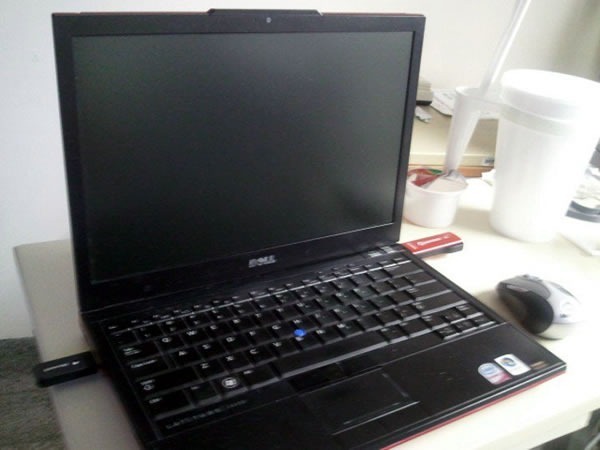
It’s my trusty Dell E4300, my “TPS Reports” writing machine. Luckily, I’d packed it up for my trip to Montreal and it was sitting, bagged up and ready to go, just inside the front door of my apartment. It was easy for my sister to pick it up and bring it to the hospital.
The ICU had way too much interfering equipment for my Rogers internet stick to get any signal, but I’d packed a portable hard drive full of movies I hadn’t yet seen (Kick-Ass, for starters) as well as my complete library of ebooks (many unread ones, too). The computer also had the charging cable for my phone, so I spent the afternoon juicing it up.
At around 9:00 a.m., I got taken down for a CT scan, where I lay very still while they scanned my head and neck:

A little later on that morning, I had to deal with a matter that hadn’t been dealt with in a couple of days:

“No, Mr. deVilla,” said the first nurse. “You must use the bedpan. Those are the rules of the floor.”
I tried to explain the situation to her, which was tricky, given how little voice I had.
I told her that it had been days since I pooped, and my two meals were ribs and salad followed a lot of chicken and barley soup. I told her that I was a good thirty years younger than their typical ICU patient. I explained that I was able to transfer from the ER bed to the ICU bed under my own power, as well as transfer to and from my bed to the CAT scan bed. But she’d been working all night with far crankier, far more uncooperative patients than I, and she was one of those people who followed the rules no matter what.
I waited until she was on her break and hit the call button. The younger nurse from this morning’s bath showed up. I wasn’t taking any chances with this one, so I explained what would happen if I wasn’t allowed to use the bathroom and had to use the bedpan instead.
“Think of the blast radius,” I whispered. “Imagine the chocolate flag of Japan.”
With that last mental image, she unhooked me from the blood pressure cuff, probes and IV and I swung myself off the bed and traipsed happy into the can.
I emerged five very butt-trumpet-y minutes later and told her that she might want to call in housekeeping.
“More skid marks than the first day of driver’s school,” I told her.
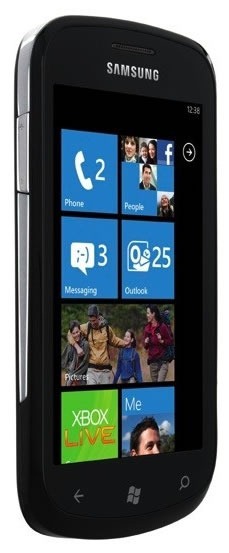
Mom dropped by before dinner. I’d managed to scribble together a couple of emails to friends and co-workers letting them know where and how I was. I asked her to take my phone overnight, in the hopes that once past the interference of the ICU, it would automatically send my messages to the outside world (for the record, it worked).

Graduation night! That evening I moved from relying totally on the IV to the “clear liquid” diet. Dinner consisted of:
- One bowl of chicken broth
- Ginger ale
- Two cups of juice (one cranberry cocktail, one orange)
- One bowl of cherry jello
- Tea
Dinner was followed by a very satisfying pee into a urinal bottle. I didn’t mind using the urinal bottle – I just draw the line at the bedpan and “number two”.
After that, I watched Kick-Ass. Enjoyable movie.
Day 4: Friday

That night, I was sleeping in stretches longer than fifteen minutes at a time. I was also breathing more easily, which meant that I didn’t need regular doses of Raver Girl Kisses Gas or oxygen. The only thing really keeping me up was the automatic blood pressure cuff, which had been set to get a reading every half hour.
There’s really not much to say about Friday, for the most part. It was a pretty quiet day, with me either watching videos or getting in some reading. I started working on a series of JavaScript/jQuery articles I’d been meaning to write. A couple of the doctors whom I knew dropped by; I gave one of them a Windows Phone 7 demo and did a little tech support on Dr. Stone’s netbook. Had I not been bedridden and in isolation, it would’ve seemed like an ordinary day.

I was still on the “clear liquids” diet. Dinner consisted of:
- A bowl of beef broth
- Ginger ale
- Two cups of juice: one apple, one orange
- Orange jello
- Tea
Day 5: Saturday
“Looks like you’re in the clear,” said the nurse on duty that morning. “You’ll still be in isolation, but you’re going to be on a regular floor instead of the ICU.”
The x-ray team came in for one final chest x-ray. I sat for them as they set up their apparatus and they declared me “the healthiest-looking guy in the ICU”.
“That’s not saying much,” I said.
“Take what you can get, guy,” replied one of the x-ray techs, smiling visibly under her surgical mask.
“More good news,” said the nurse. For lunch, we’re starting you on solid food.
Solid food! My favourite!
Lunch consisted of:
- Some chicken-and-noodles in tomato sauce that under normal conditions would’ve been appalling, but was downright fantastic
- Peas
- Jello (can’t remember the flavour, presumably some fruit flavour simulated with esters)
- Tea

That afternoon, they unhooked me from the automatic blood pressure cuff, heart monitoring equipment, IVs, oxygen meters and everything else. With a mask, disposable gown and gloves, they wheeled me over to a regular room with an actual window. It faced south and offered a view of the Queensway, Gardiner Expressway, Lake Shore Boulevard and the lake:

With the exception of an hour’s session with an IV pumping my last dose of intravenous antibiotics, I would spend the rest of my stay untethered. I didn’t need to call a nurse to unhook me to sit up or go to the bathroom. Free (relatively) at last!
The bathroom in the ICU just had a toilet and nothing else. First order of business was to clean up a little and shave:

Being right by an outside wall and a window and far away from the ICU’s interference, I had no trouble getting a signal with the internet stick and spent a good chunk of the afternoon getting caught up with friends and family in the outside world.
I’d been lying down so long that I decided to stand up while using my computer. Luckily, the adjustable table in my room could be cranked to a height suitable for standing-up work. Just being able to stand up and walk around the room was wonderful.
Here’s a photo of dinner:

And here’s the menu that came along with it:
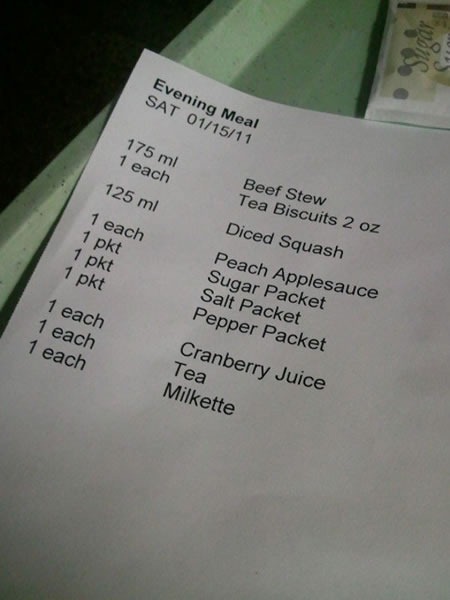
Its contents:
Evening Meal
Sat 01/15/11
175 ml Beef Stew
1 each Tea Biscuits 2 oz
125ml Diced Squash
1 each Peach Applesauce
1 pkt Sugar Packet
1 pkt Salt Packet
1 pkt Pepper Packet
1 each Cranberry Juice
1 each Tea
1 each Milkette
I ate dinner standing up, walking about the room with my plate, just because I could.
After dinner, the TV guy offered to rent me a TV set, but I said “You know what? I think I’ll pass.” Instead, I opted to watch Red Letter Media’s funny review of Revenge of the Sith and fell asleep to PopTron.
Day 6: Sunday
I started the day off with more solid food, which included the hospital rendition of French toast:

(Don’t worry, they gave me syrup. I just thought it would photograph better unadorned.)
Breakfast was:
- One slice of French toast
- Syrup
- Oatmeal
- Brown sugar
- Coffee
The doctors – Dr. Fox, the ear/nose/throat guy and Dr. Rodrigues, the respirologist – came into the room, and without masks. They told me that I unless I had some burning desire to stay at the hospital, I would be free to go.
“The hospital is no place for you to be, especially if you’re sick,” quipped Dr. Rodrigues. “But I want you to take the week off work and not go outside. It’s unusually cold this week, and it may trigger bronchial spasms. Perhaps you should stay with your mother.”
A younger me would’ve chafed at being under house arrest for a week at Mom’s, but the thought of having three squares a day (Mom’s very busy and has a housekeeper) without any effort was pretty appealing. That younger me would’ve railed at the idea of a week of idleness, but I figured that the folks at Microsoft know how hard I work, and there’d be work aplenty for me to do when I get back.
“If it gets me out of here,” I said, “you have a deal.”

That afternoon, at Mom’s a got a couple of visits. One was from my friend Anne, who brought over the Vanity Fair with the Justin Bieber interview (a more interesting read than I would’ve thought) and juice boxes, including my favourite, mango. Then came Marichka, who brought a bag full of stuff to read: all the books, magazines and newspapers pictured above.
Epilogue
It’s Wednesday afternoon as I finish writing this article, just over a week after I checked into the ER. I’ve been spending the past couple of days reading, listening to ebooks, watching videos, getting in touch with friends and even doing a little recreational programming. I’m feeling better every day and expect to be back at 100% by the start of next week (a good thing; it’s shaping up to be a busy one).
Kudos to the staff at “St. Joe’s” – Drs. Fox and Rodrigues, the nurses in both ICU and 4M, the ER staff, everyone! And big thanks to Mom, sis and bro-in-law for all their invaluable help.
I’d like to thank everyone for all their kind words and “get well soon” messages, and especially Wendy, Dave, Anne and Marichka for coming to visit. It all helped, and I’ll see you as soon as I’m out from under house arrest!







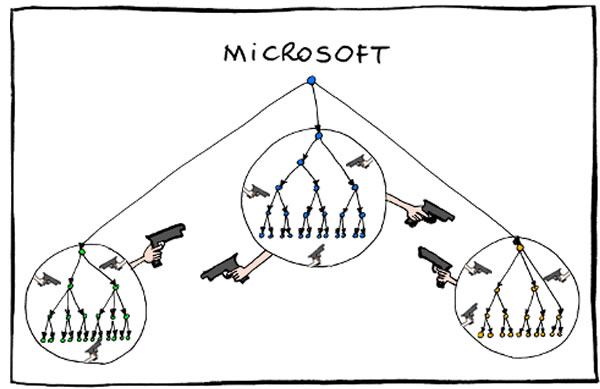
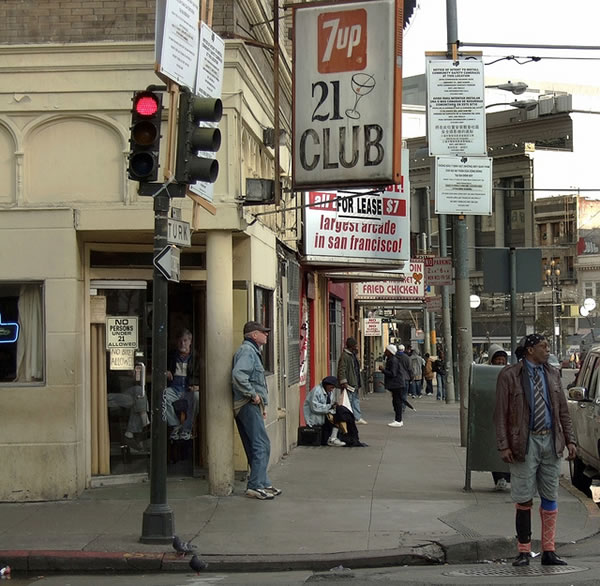
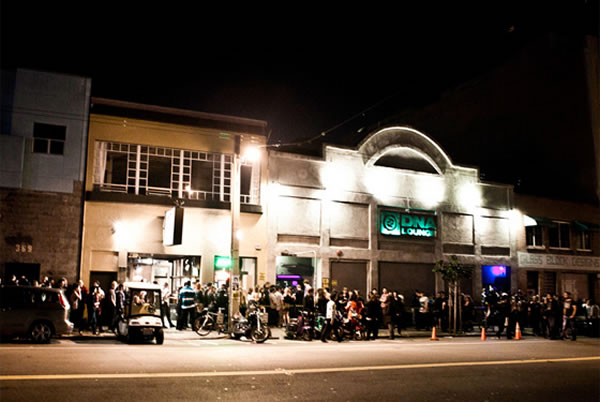

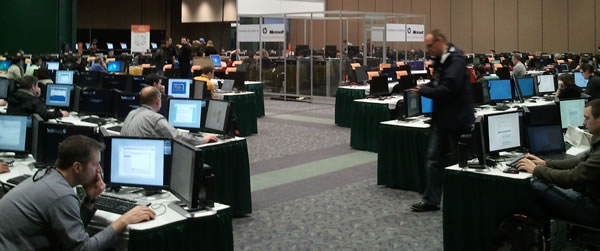


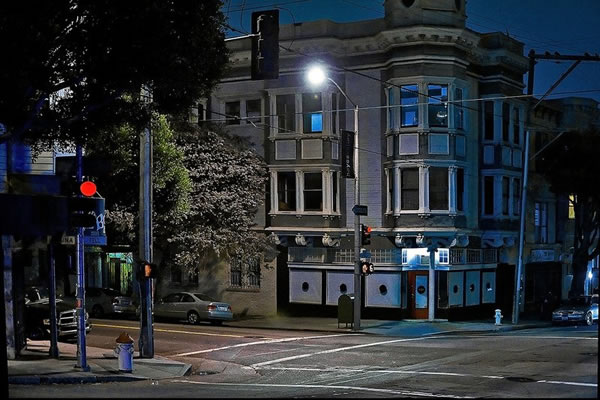
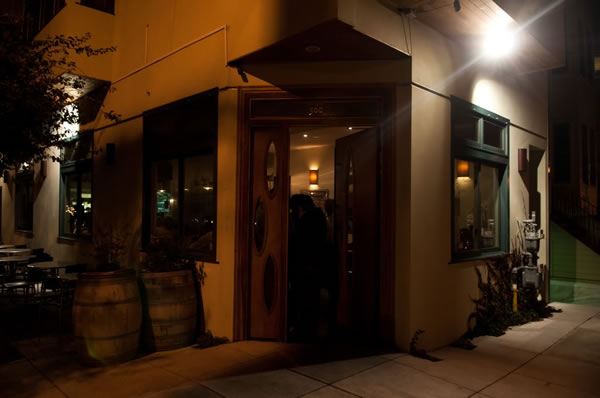


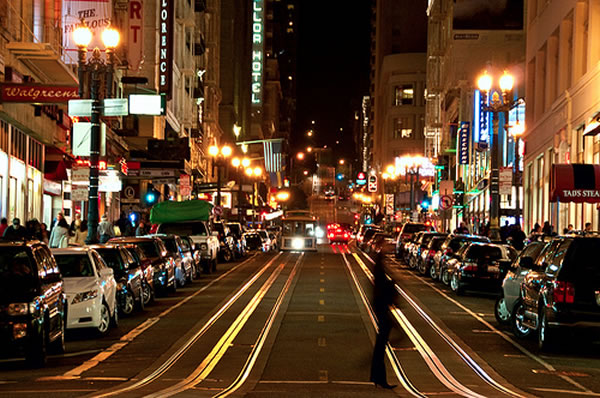



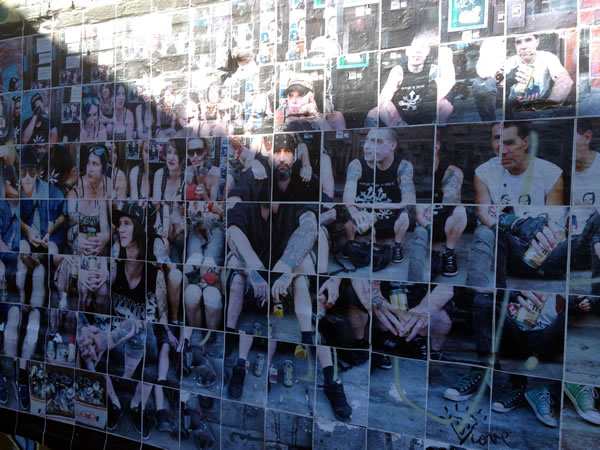
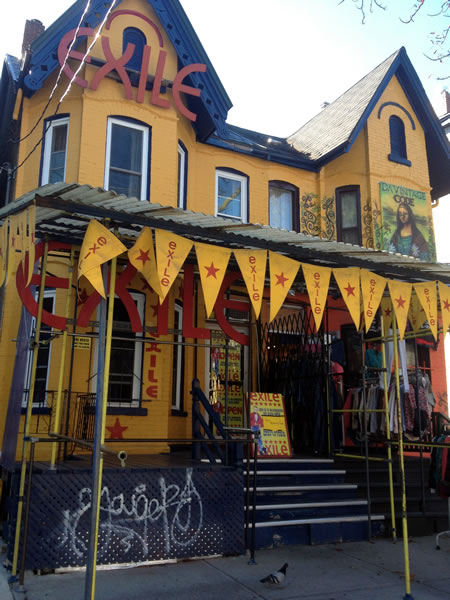

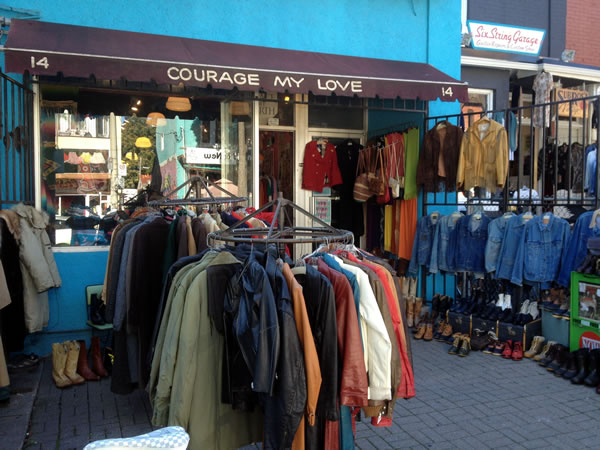



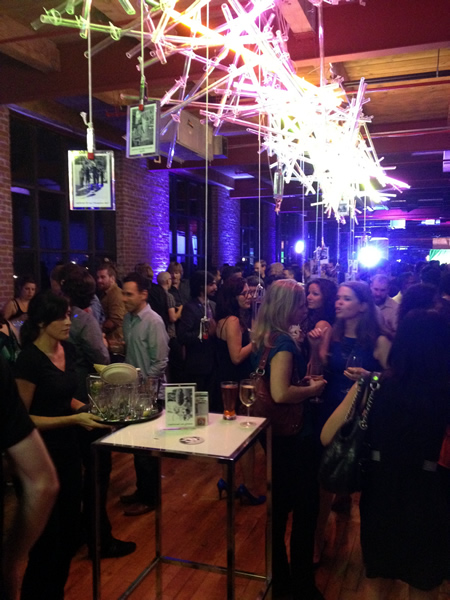
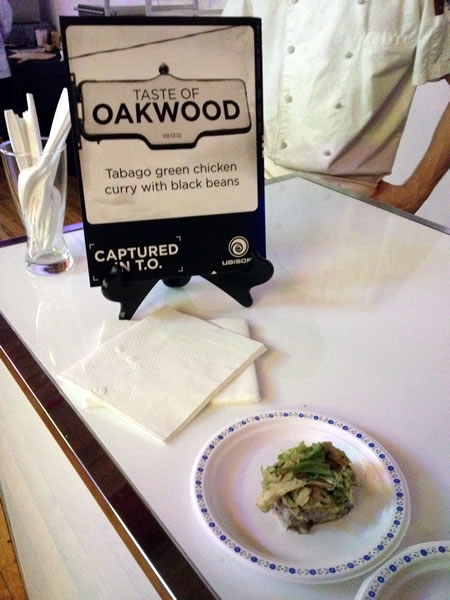


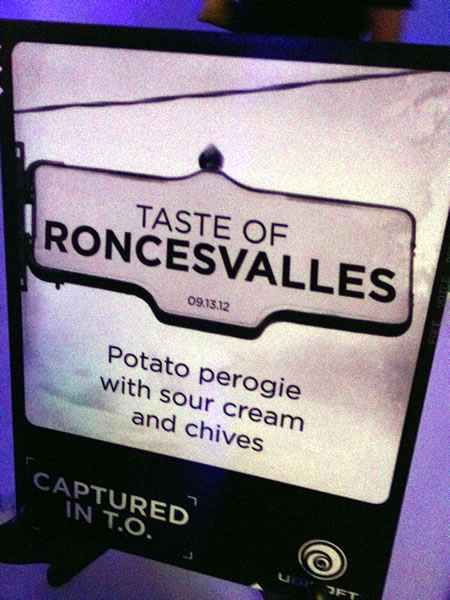
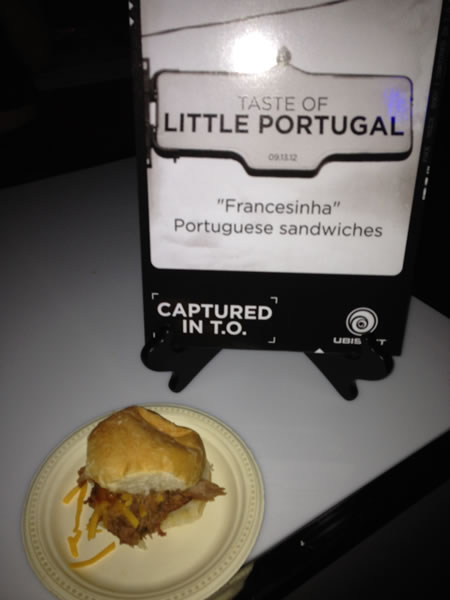





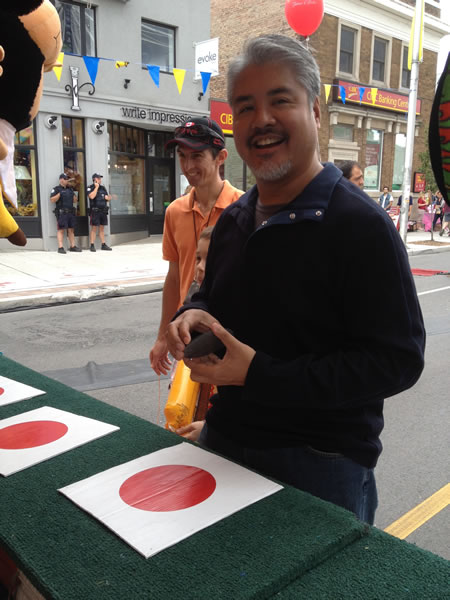






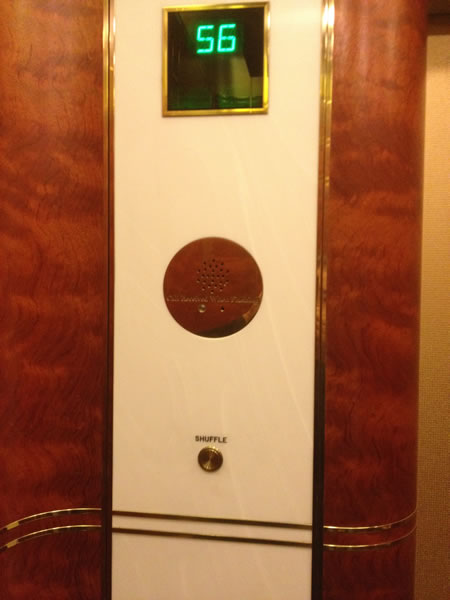


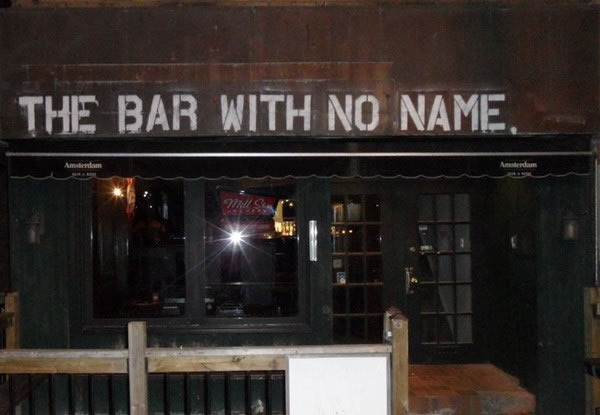


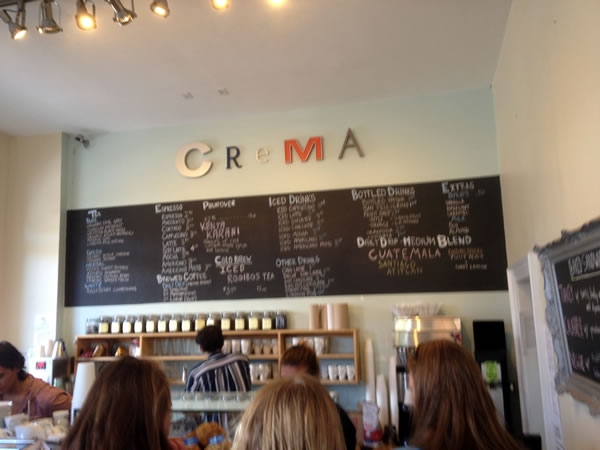
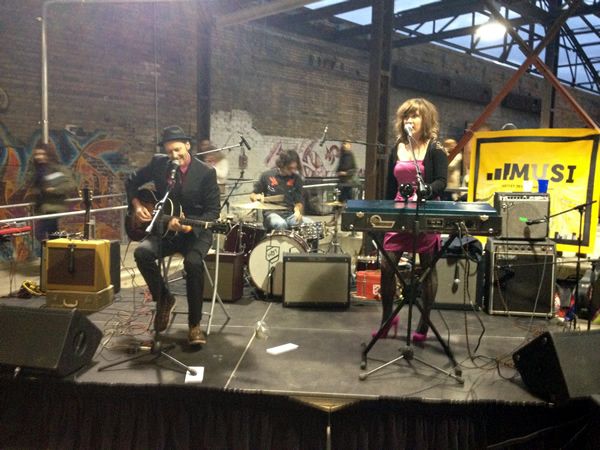




 In the late summer of 1998, I was chatting with my friend Rob in my apartment, which was then smack in the middle of downtown Toronto, at the
In the late summer of 1998, I was chatting with my friend Rob in my apartment, which was then smack in the middle of downtown Toronto, at the 





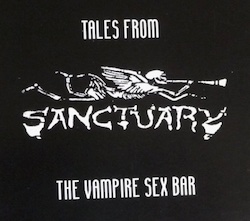
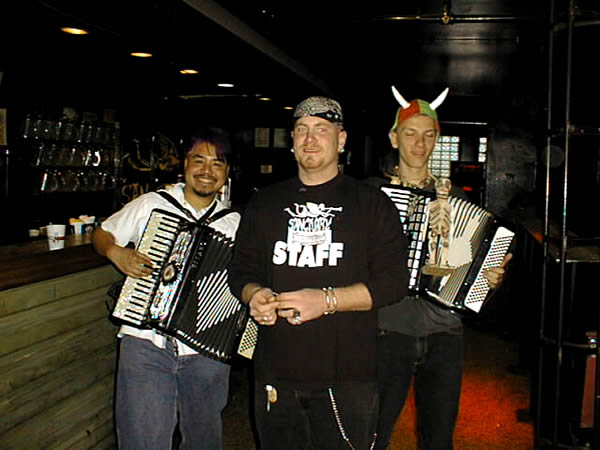





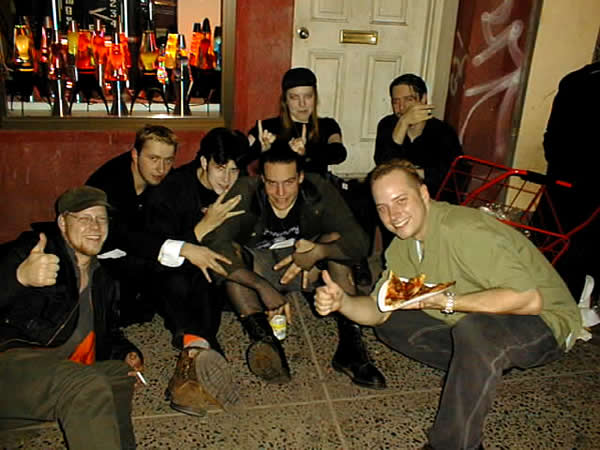






















































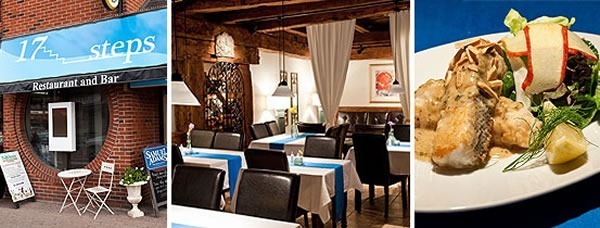
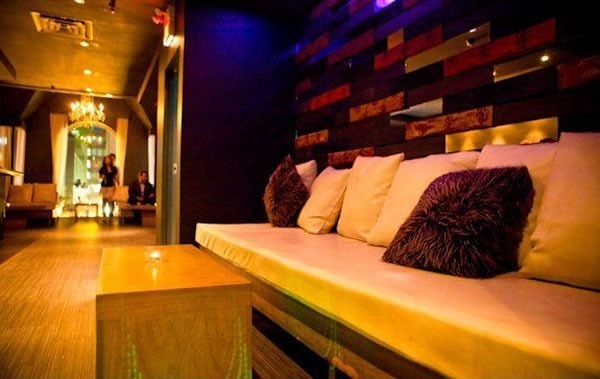
 I ended up in a great conversation with Rachel that started with my grand scheme for personal reinvention/renewal plans for 2011 (“My new role model shall be…
I ended up in a great conversation with Rachel that started with my grand scheme for personal reinvention/renewal plans for 2011 (“My new role model shall be…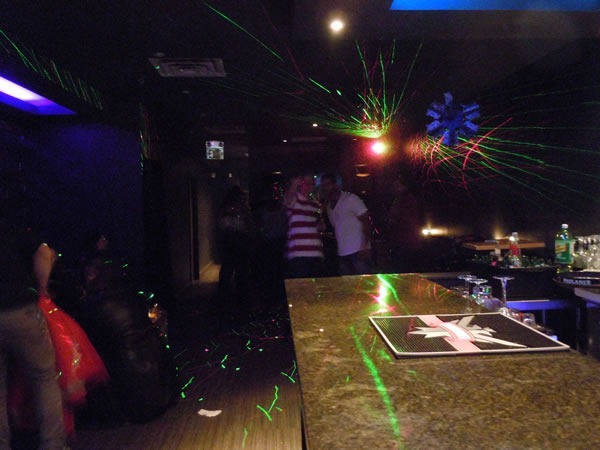
![ceeloyorkville_thumb[1] ceeloyorkville_thumb[1]](https://www.joeydevilla.com/wordpress/wp-content/uploads/2010/12/ceeloyorkville_thumb11.jpg)
